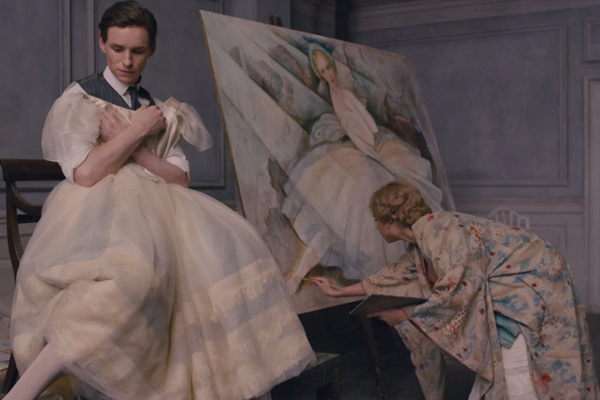
The Danish Girl (2015) / Drama
MPAA Rated: R for some sexuality and full nudity
Running Time: 119 min.Cast: Eddie Redmayne, Alicia Vikander, Matthias Schoenaerts, Sebastian Koch, Amber Heard, Ben Whishaw
Director: Tom Hooper
Screenplay: Lucinda Coxon (based on the book by David Ebershoff)
Review published December 27, 2015
 Transgendered
landscape painter Einar Wegener and his transition into a woman
named Lili Elbe provides the basis of this sumptuously filmed drama,
important because it is one of the first sex reassignment surgeries to be performed
that would change the male sex organs into that of a woman. Set
mostly in Copenhagen of the 1920s, we find Einar (Redmayne,
Jupiter Ascending) married to a less
successful portrait painter, Gerda (Vikander,
Burnt), who asks her husband to pose in women's
dress and stockings to that she may finish a portrait of a ballerina.
The moment becomes an epiphany for Einar, who soon begins to dress in
Gerda's clothing, and even begins attending public functions as Lili
Elbe, Einar's cousin (in real life, Lili would often claim to be
Einar's sister). Soon after, Einar begins to feel that Lili
is who he really is all along, despite the pleas of his suffering
wife, and aims to make the transformation into a woman complete by
undergoing a complicated and still experimental surgery in France to
finally become Lil in every detail.
Transgendered
landscape painter Einar Wegener and his transition into a woman
named Lili Elbe provides the basis of this sumptuously filmed drama,
important because it is one of the first sex reassignment surgeries to be performed
that would change the male sex organs into that of a woman. Set
mostly in Copenhagen of the 1920s, we find Einar (Redmayne,
Jupiter Ascending) married to a less
successful portrait painter, Gerda (Vikander,
Burnt), who asks her husband to pose in women's
dress and stockings to that she may finish a portrait of a ballerina.
The moment becomes an epiphany for Einar, who soon begins to dress in
Gerda's clothing, and even begins attending public functions as Lili
Elbe, Einar's cousin (in real life, Lili would often claim to be
Einar's sister). Soon after, Einar begins to feel that Lili
is who he really is all along, despite the pleas of his suffering
wife, and aims to make the transformation into a woman complete by
undergoing a complicated and still experimental surgery in France to
finally become Lil in every detail.